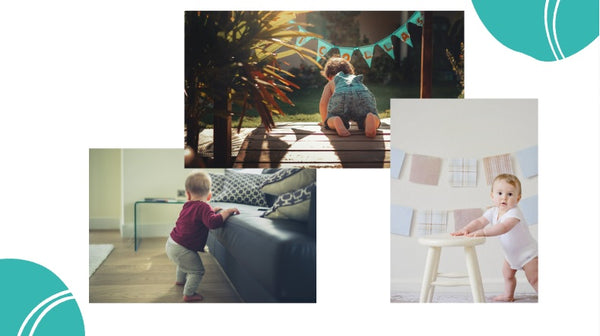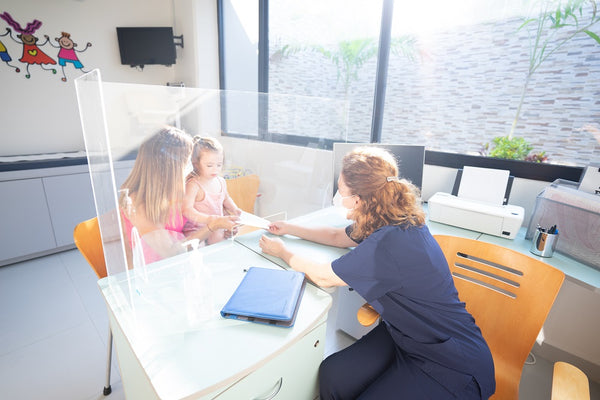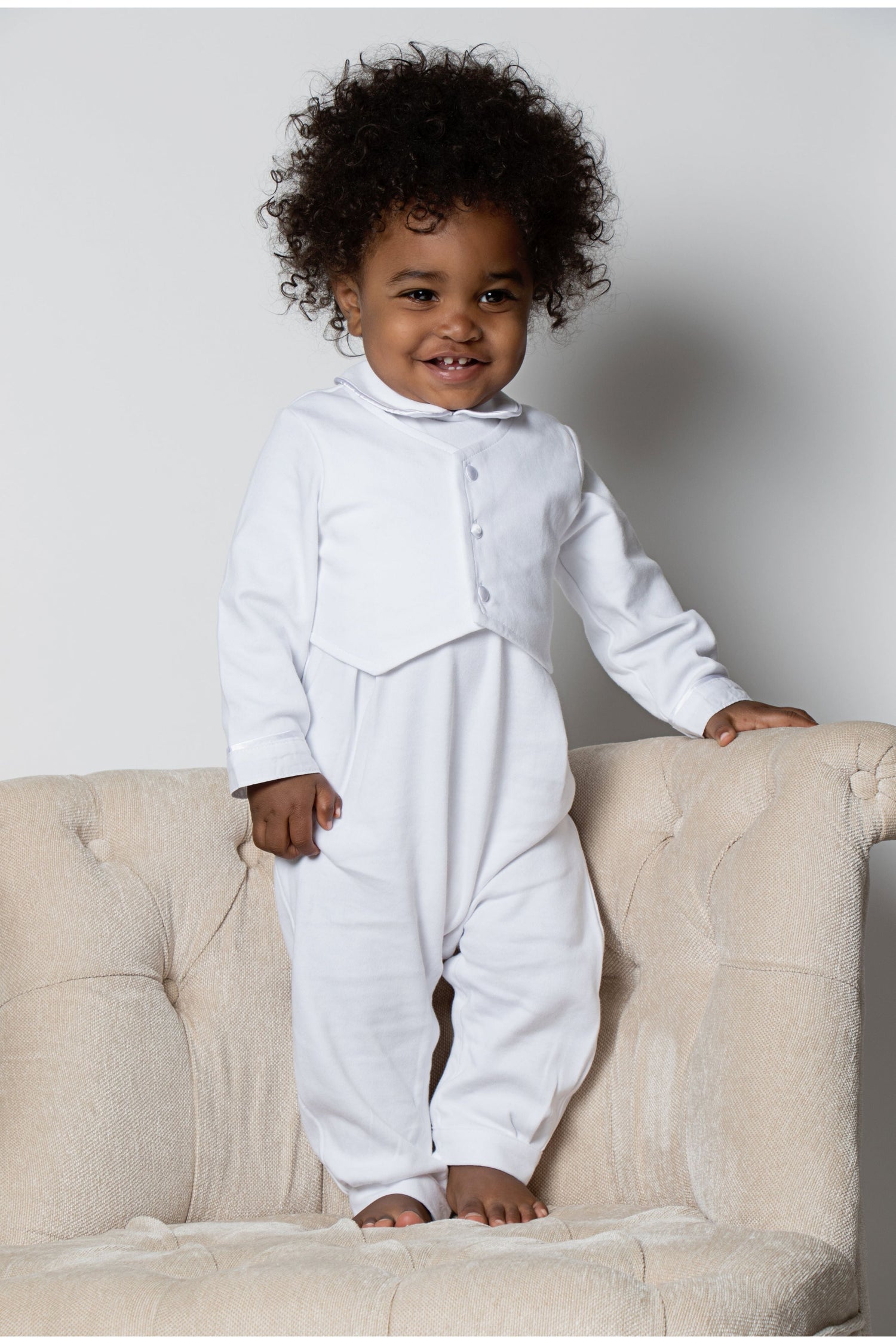But when exactly do babies start walking? This question often lingers in the minds of many parents, especially first timers.
The truth is, there is no one-size-fits-all answer, as each baby develops at their own pace. However, there are certain age ranges and factors that can help you understand when your little one might be ready to take those first wobbly steps.
In this comprehensive guide, we'll explore the average age babies start walking, signs to look out for, best shoes to wear and tips to encourage your little one's first steps. Let's dive in!
Average Age for Babies to Start Walking
The average age for babies to start walking independently is around 12 months. However, it's essential to remember that every child is unique, and some may begin walking earlier or later than others. Babies can take their first steps anywhere between 9-12 months old and are usually quite skilled at it by the time they're 14-15 months.
Signs Your Baby is Ready to Walk

Before your baby starts walking, they will likely go through several developmental stages, such as:
- Crawling: Crawling is a significant milestone in a baby's development and serves as one of the key signs that a baby is ready to walk. It is considered the first form of independent movement, allowing babies to explore their environment and develop essential skills that will prepare them for walking.
- Pulling themselves up: Pulling themselves up is a significant milestone in a baby's development and serves as one of the primary signs that they are ready to walk. This action typically occurs between 7 and 12 months of age, when babies begin to use objects such as furniture or a caregiver's hand for support as they pull themselves into a standing position. This crucial step not only demonstrates their growing physical strength and coordination but also paves the way for them to take their first independent steps.
- Cruising (side-stepping while holding onto furniture): Cruising, or side-stepping while holding onto furniture, is a significant milestone in a baby's journey towards walking independently. This crucial stage typically occurs around 10 months of age and serves as an essential precursor to walking. As babies develop their gross motor skills, cruising allows them to strengthen their leg muscles, improve balance, and learn how to shift their weight while taking steps.
These milestones typically occur between 6-13 months. If your baby is achieving these milestones, be patient, as they may just need more time to start walking independently.
When to Consult a Pediatrician

The Centers for Disease Control and Prevention (CDC) recommends talking to your child's pediatrician if they're not walking at all by 18 months and not walking steadily by age 2. It's essential to keep in mind that every child develops at their own pace, and what's healthy and normal for one child may not be for another.
Tips to Encourage Early Walking
Here are some activities to help encourage your baby to start walking:
- Cruise along furniture: Encourage your baby to practice side-stepping while holding onto furniture for support.
- Support their trunk: Hold your baby's trunk to provide stability as they practice walking.
- Give the baby something to hold onto: Offer a toy or your hand for your baby to grasp while they take steps.
- Encourage them with toys: Place enticing toys just out of reach to motivate your baby to move towards them.
- Reach up and down: Help your baby practice standing up and sitting down to build leg strength.
- Set up a scavenger hunt: Hide toys around the room for your baby to find, encouraging them to move and explore.
- Give it a push: Provide a push toy for your baby to hold onto and push around the room.
What to Look Out for When Baby Starts Walking
As your baby learns to walk, keep an eye out for common issues such as intoeing (pigeon-toed), out toeing, flat feet, bow legs, and walking on tiptoes. If you notice any of these concerns, consult your pediatrician for guidance.
Best Shoes for Babies Learning to Walk
As babies take their first steps, it is essential to provide them with the right type of shoes that support their natural foot development and protect their delicate feet. When selecting the perfect pair of shoes for your baby's first steps, there are several factors to consider:
- Firstly, it is important to note that barefoot is still the best option for a baby's foot development. However, when it comes to protecting their feet from uneven surfaces, dirt, heat, or cold, shoes become necessary.
- In such cases, choose shoes that are lightweight and flexible, as they allow for natural foot movement and do not restrict the child's walking ability. Avoid hard, stiff shoes that can hinder their progress.
- The material of the shoes is another crucial aspect to consider. Opt for shoes made from soft, high-quality leather or mesh, as these materials will mold to the contours of your baby's feet and allow them to breathe comfortably.
- Breathable materials are essential, as they prevent your child's feet from sweating excessively and ensure proper drying.
- When it comes to the soles of the shoes, rubber soles are recommended for traction and preventing slips or slides. Non-skid soles are also a good option, especially for socks or booties worn indoors during colder months.
- Ensure that the shoes have fully adjustable fastenings and padded ankles for protection and support. The shoes should fit well, neither too loose nor too tight, and have a large enough toe box for the baby's toes to move freely. It is worth mentioning that shoes will not help your baby learn to walk faster or better. In fact, shoes with inflexible soles can make it harder for them to learn to walk due to restricted natural foot movement.
Therefore, the ideal shoes for a baby's first steps should be lightweight, flexible, made from breathable materials, and have rubber or non-skid soles for traction. These factors will ensure that your baby's feet are well-supported and protected as they embark on their exciting journey of learning to walk. Protect your baby’s first step with Carriage Boutique Crib Shoes for boys and girls.
Conclusion
Watching your baby take their first steps is a magical moment for parents. Remember that every child develops at their own pace, and it's essential to be patient and supportive during this exciting time.
By understanding the average age babies start walking, recognizing the signs of readiness, and using our tips to encourage early walking, you'll be well-prepared to celebrate your little one's milestone. Happy walking!













